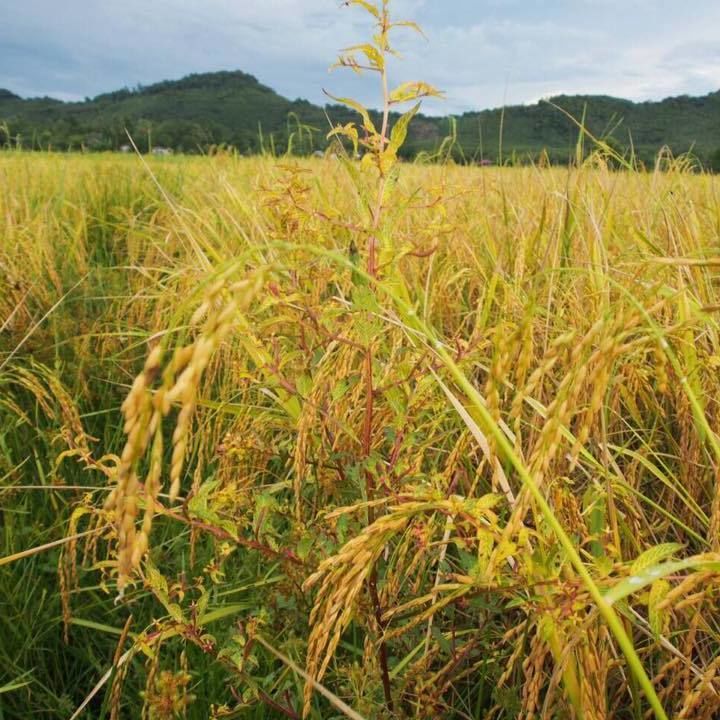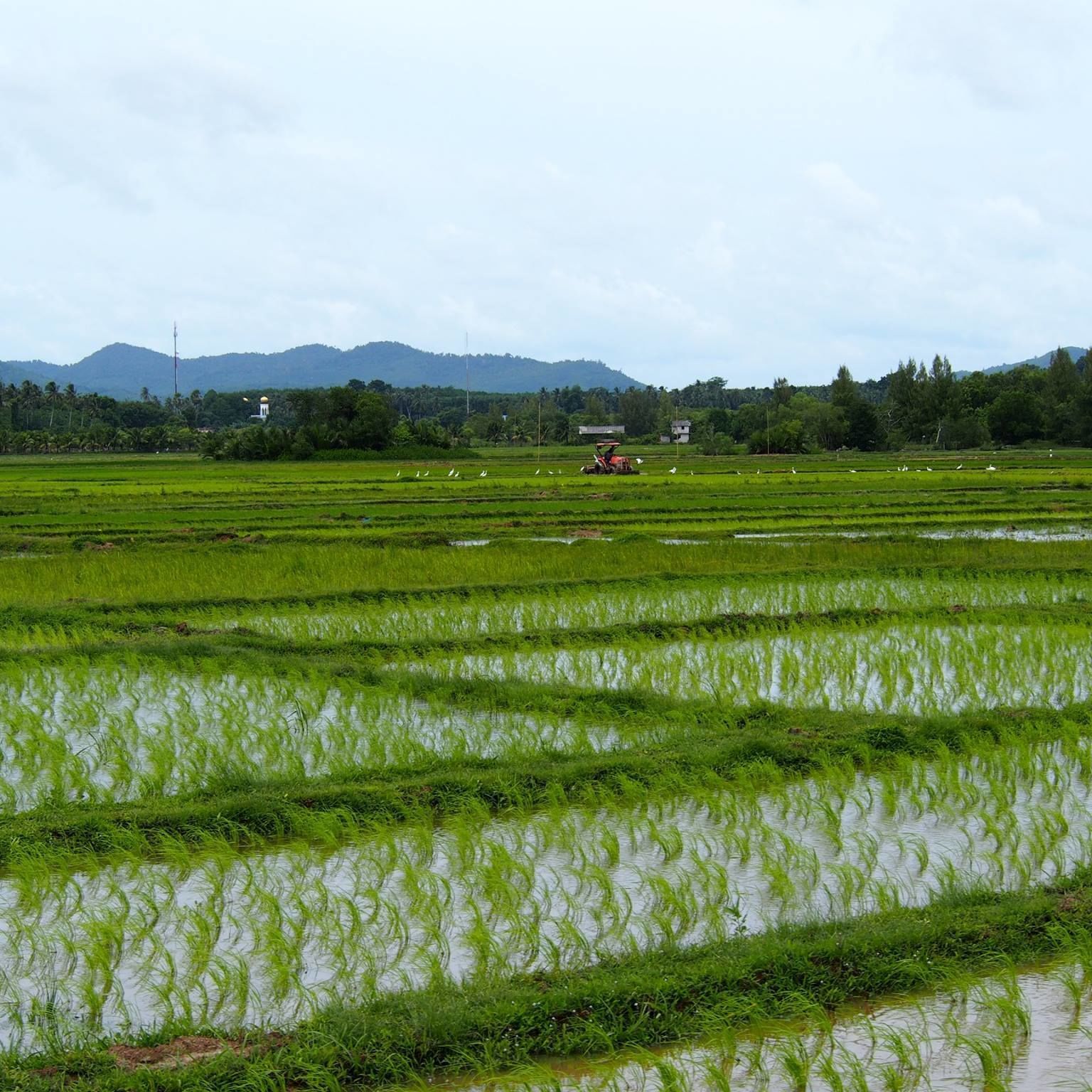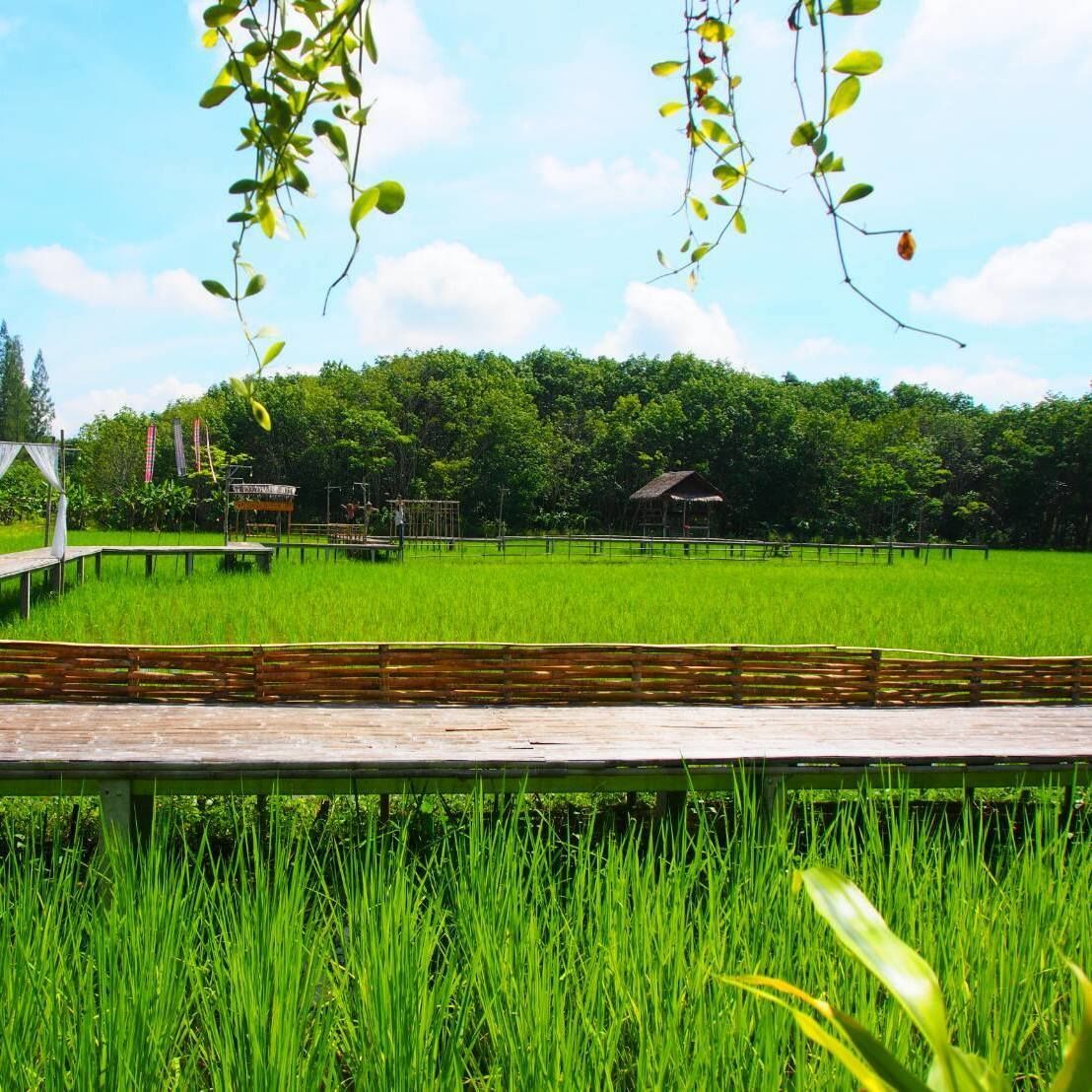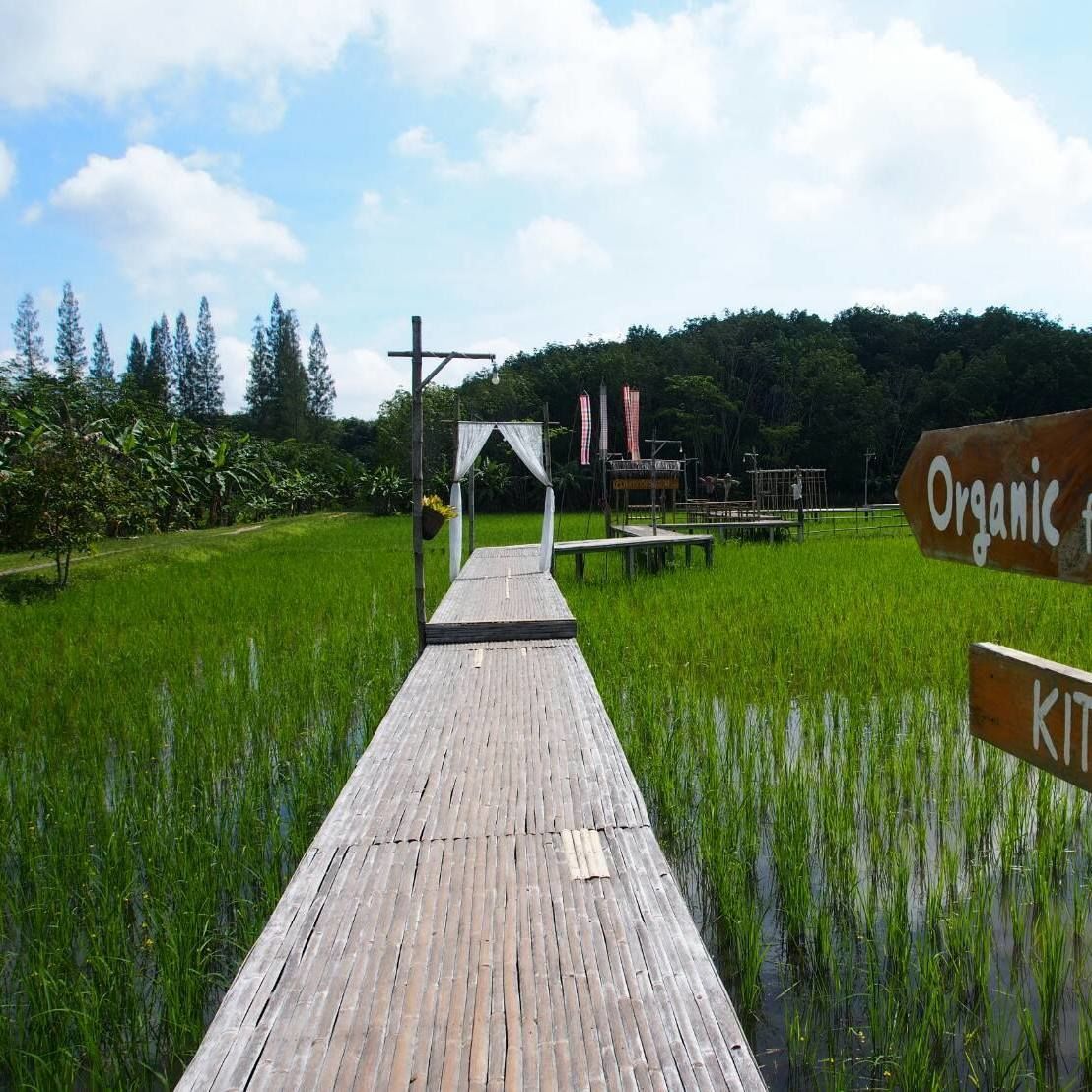Paddy fields in Thailand
Rice Farming in Thailand
There are two categories of rice farming in Thailand, in-season and off-season rice farming.
In-season rice farming refers to regular rice cultivation during the rainy season. It begins in May until October followed by a harvest period that ends in February. This farming method produces rice only once a year and takes approximately 120 days to grow. During the cultivation period, rice flowering can be expected precisely on the same month and day.
Off-season rice farming is a rice cultivation method during the irregular period, which requires less support from the light for flowering. It can begin as early as in January and harvest in April, at the latest. It is common in the areas with the exceptional irrigation system like the Central part of Thailand. Cultivation takes approximately 90 days and can expect to produce up to 2-3 crops per year.
Rice environments
Rice production in Thailand can be classified into four ecosystems; irrigated, rained lowland, Deep water, and upland. Rained lowland is the most predominant, followed by irrigated, Deep water, and upland.
Administratively as well as geographically, Thailand is divided into four regions: central, north, northeast, and south. Each region has different rice-growing environments.
Northeastern region. The northeastern region is also known as the Khorat plateau, a saucer-shaped tableland situated at 90–200 meters above sea level. Almost one-third of the land area and nearly half the rice land of Thailand are located in this region; the average size of rice farms is smaller than in other regions. Irrigation potential in the region is limited due to undulating topography. Moreover, soil erosion and drought during the dry season are acute. The water-holding capacity of the soil is extremely poor. The northeastern region produces both long grain and glutinous rice.
Central region. The central region is an intensively cultivated alluvial area. During the rainy season, rice covers the major part of the region, which accounts for about one-fifth of the total cultivated rice land of the country in the wet season. The average farm size is large, and a large proportion of the rice land has access to irrigation facilities, allowing many farmers to grow two rice crops during the year. Almost 75% of the dry-season rice grown under irrigated conditions is located in this region. Farm operations are almost entirely mechanized, and farmers adopt the direct-seeding method of crop establishment to save labor. This region produces mostly long-grain rice. The main rice surplus comes from this region.
Northern region. The northern region contains almost one-third of the land area of Thailand. Upland rice is grown in the lower altitudes of high hills and in upland areas. Lowland rice is grown mainly in lower valleys and on some terraced fields where water is available. The northern region has about 20% of the total rice land in the country.
Southern region. The southern region, touching the west and east coasts of the peninsula, constitutes about 14% of the total area of the country. The region has only 6% of the total rice land. The soil is acidic. With limited rice fields under cultivation, there is always a shortage of rice for local consumption.
Type of Rice
Rice are categorized by its physical descriptions consist of short grain, medium grain and long grain. Rice from Thailand is the long grain, which exceeds 7 mm in length. Thai long grain rice also distinguished into two different textural types, regular and glutinous rice.
The dry season of Thailand runs from November through April (shaded in the figure). The geographical location of Chao Phraya and Tha Chin watersheds is in the central region where the rainfall occurs in mid-May to mid-August due to the southwest monsoon and another with northwest monsoon in mid-October to the end of November. Therefore, more than one crop of rice is generally grown if the farmers have enough water supply for land preparation. It was found that in the Ayuthaya, Nakhon Pathom, and Pathum Thani provinces, the farmers are able to grow rice twice a year. However, in case of the northeastern region (i.e., Mun and Chi watersheds), the rainy season generally comes a bit later than the central region, so the farmers generally start to prepare their rice fields in mid-July and then start sowing in mid-August in order to use the rainwater. Nowadays, the non-irrigated rice fields have been promoted by the Department of Agriculture to cultivate mung bean or other beans in order to improve soil quality.
Rice Farming in Thailand
Paddy
We support organic rice farming
Organic rice means the produce and products of rice derived from organic rice production system.
Organic rice production system means a system of rice production management that enhances the ecosystem, sustainable biodiversity and biological cycles. It emphasizes the use of natural materials by opposing the use of synthetic raw materials, transgenic plants, animals or microorganisms or raw materials derived from genetic modification. It also covers the product management, which carefully emphasizes on every processing step to maintain the organic integrity and quality of organic rice products.
Organic rice produce means organic paddy, which also include byproducts from organic rice farming, such as organic straw, wherever the case may be.
Processing means the processes of organic rice produce by milling organic paddy into organic brown rice or organic white rice, including the physical, biological and other processes of organic brown or white rice, organic rice bran or organic small broken rice.
Organic rice products mean products obtained from the processing of organic paddy, such as brown rice, white rice, husk, rice bran, small broken rice, rice germ, including the further processed products, without addition of any other ingredients, for example, rice bran oil, rice flour, germinated brown rice, parboiled rice, etc.
Rice pest means types and varieties of plants, animals or microorganisms which can cause damages to organic rice.












